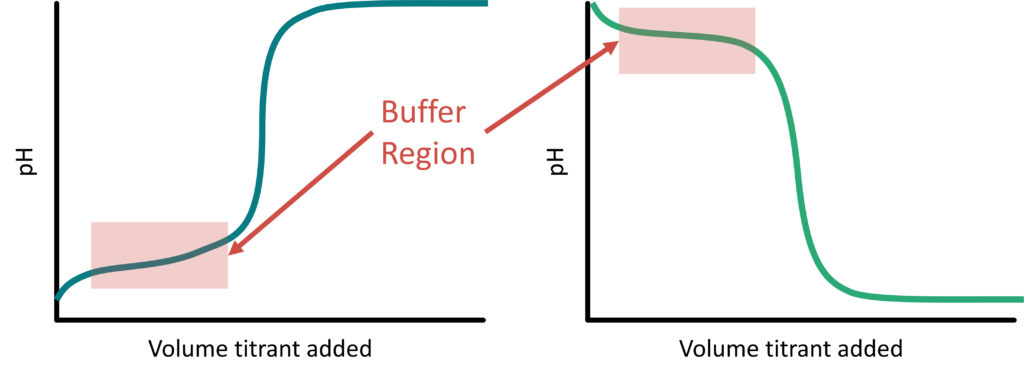For a pH titration (between an acid and a base), there are two common ways to find the endpoint: using a pH probe and using a colour indicator.
Titrations with a pH probe
Titrations where a pH probe is used are also called potentiometric titrations, since a pH probe really measures the electrical potential (or voltage) in a solution. We always put the pH probe into the flask during a titration – so it measures the container that starts out filled with our analyte. Usually we will plot pH (on the y-axis) against the amount of titrant we have added (on the x-axis).
When we are titrating an acid analyte, our pH will be initially low (since it’s an acid!). We will neutralize it during the titration by adding a base as our titrant, so the pH will increase. An example of the titration of an acid analyte with a strong base titrant:

When we start with a basic analyte, we will neutralize it during the titration by adding acid. So our pH will start high (since we begin with a basic solution) and decrease as we add acid.

Notice that on both pH plots, there is an region near the beginning where the pH does not change much, even though we are adding titrant. This is the buffer region of the titration – by taking a weak acid or base, and neutralizing some of it (forming its conjugate), we have created a buffer!

You will also notice that both acid and base curves have a very steep region, where the pH changes quickly as titrant is added. The endpoint for the titration is located right in the middle of this region (marked with a star in the figure below). Reading the volume of titrant added at this point will help us determine the amount of titrant we added – in mol – (and therefore the amount of analyte we had).

There is one other interesting (and useful!) point on a pH curve is the half-equivalence point – the point exactly halfway between the start of the titration and the endpoint ( = equivalence point). At this point, pH = pKa of the analyte, quite useful for identifying an unknown acid.